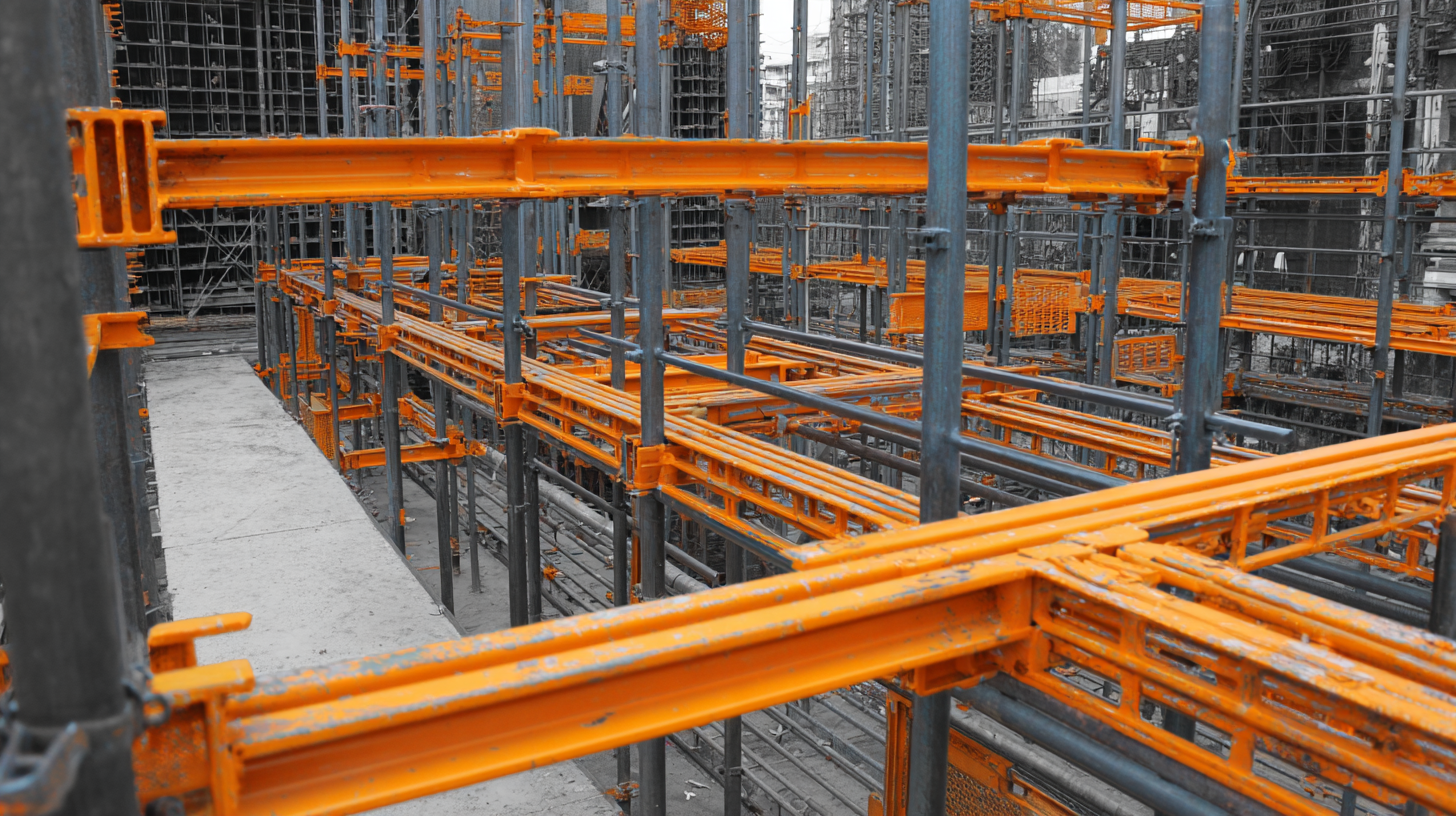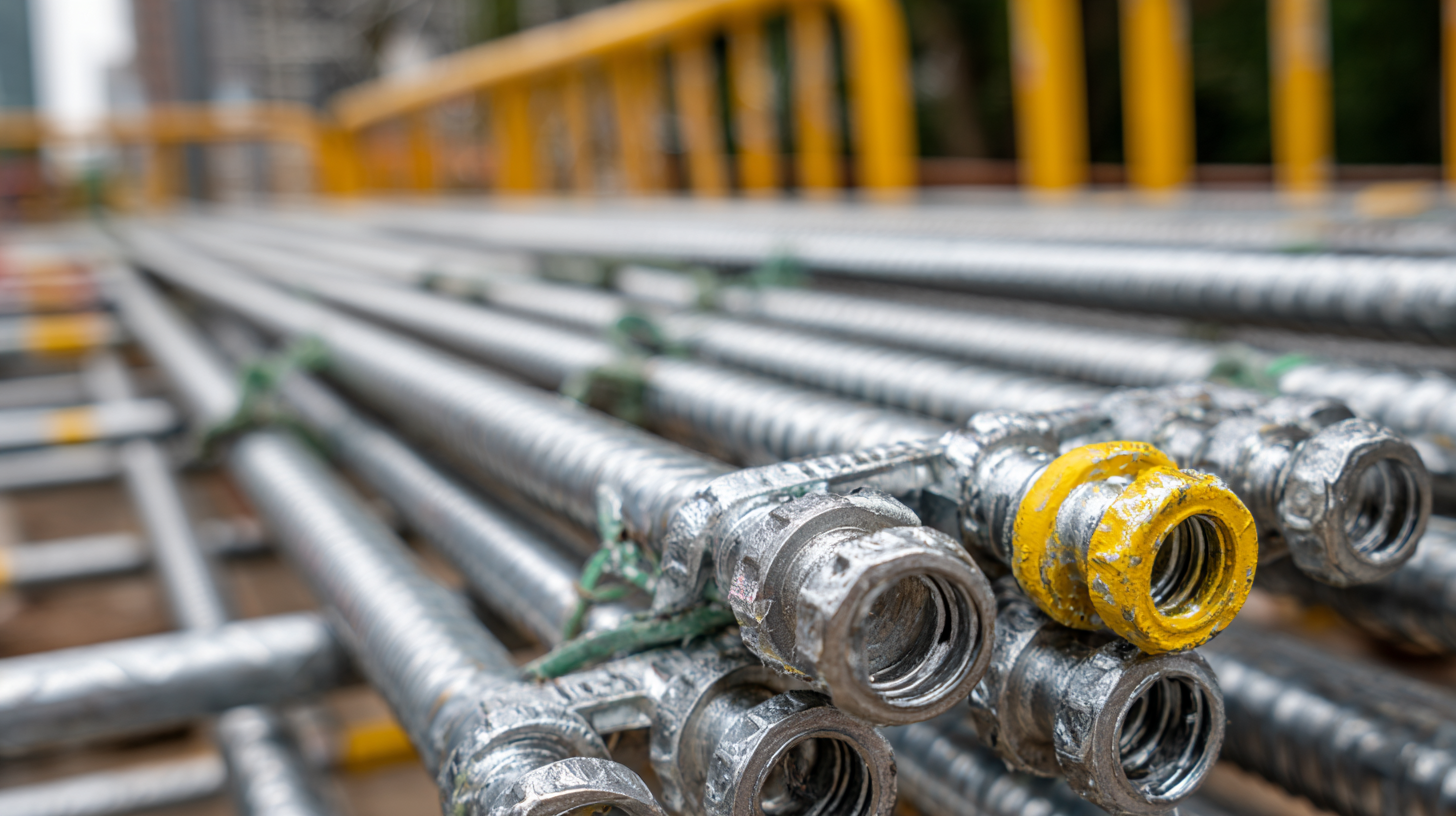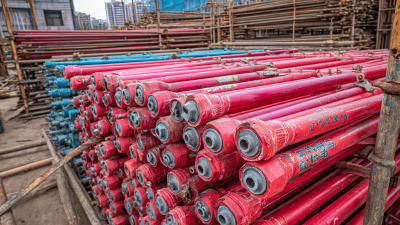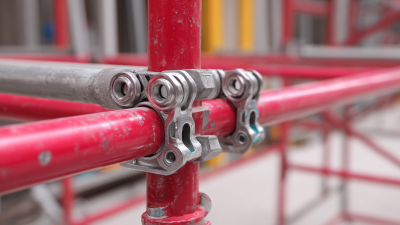 +86 18531741341
+86 18531741341
Leave Your Message
The construction industry has witnessed significant advancements in scaffolding technologies, with Cup Lock Scaffolding emerging as a preferred choice among professionals. According to a report by MarketsandMarkets, the global scaffolding market is projected to reach $4.8 billion by 2026, driven by the increasing demand for safe and efficient construction practices. Cup Lock Scaffolding, in particular, stands out due to its unique design that enhances stability and load-bearing capacity, making it an ideal solution for large-scale projects. The ease of assembly and disassembly, combined with its adaptability to various site conditions, contributes to reduced labor costs and project timelines. As construction continues to evolve, understanding the benefits of Cup Lock Scaffolding systems becomes essential for industry stakeholders aiming to maximize efficiency and safety in their operations.

 Cup lock scaffolding is a widely used system in the construction industry, known for its robustness and ease of assembly. This modular scaffolding consists of vertical standards and horizontal ledgers interconnected via cup-shaped connectors, allowing for quick installation and considerable stability. According to a recent report from the Scaffolding Association, the cup lock system accounts for over 40% of all scaffolding used in large-scale projects due to its versatility in accommodating varied structural designs and load requirements.
Cup lock scaffolding is a widely used system in the construction industry, known for its robustness and ease of assembly. This modular scaffolding consists of vertical standards and horizontal ledgers interconnected via cup-shaped connectors, allowing for quick installation and considerable stability. According to a recent report from the Scaffolding Association, the cup lock system accounts for over 40% of all scaffolding used in large-scale projects due to its versatility in accommodating varied structural designs and load requirements.
One of the main benefits of cup lock scaffolding is its ability to support high load capacities while maintaining a lightweight profile, making it ideal for both commercial and residential projects. With installation speeds reported to be 30% faster compared to traditional scaffolding systems, productivity on-site significantly improves. Moreover, the design provides enhanced safety features as it minimizes the risk of component failure.
Tips: When choosing a cup lock system, ensure that you select scaffolding that meets the latest safety standards for your region, as these can vary. Regular inspection of the connectors and standards can prevent accidents and prolong the life of the scaffolding. Additionally, investing in training for your crew can further enhance the efficiency and safety of scaffold setup and usage.
Cup lock scaffolding systems have become a popular choice in construction projects due to their numerous advantages. One key benefit is their ease of assembly and disassembly. The unique cup lock design allows for a quick connection of vertical standards and horizontal ledgers, significantly reducing labor time on site. This efficiency not only speeds up project timelines but also enhances safety, as the reduced time on scaffolding reduces the chance of accidents during setup.
Tip: Always ensure that the base plates are properly positioned before assembling the cup lock system to provide maximum stability and weight distribution, which can prevent potential collapses.
Another notable advantage is the flexibility offered by cup lock systems. They can be configured in various shapes and heights, making them suitable for diverse construction needs, from residential buildings to large commercial structures. This versatility ensures that projects can adapt to changing requirements without the need for extensive modifications.
Tip: Regularly inspect the integrity of the cup lock joints and connections to maintain a safe working environment, as wear and tear can compromise the scaffolding's performance over time.
This bar chart illustrates the key advantages of using Cup Lock Scaffolding Systems in construction projects, highlighting aspects such as cost efficiency, safety, speed of assembly, versatility, and stability, with ratings based on general industry insights.
Cup lock scaffolding systems are celebrated for their robust design and safety features, making them a preferred choice on construction sites. One of the primary advantages of cup lock scaffolding is its ability to comply with strict safety regulations and standards that ensure worker protection. The system's innovative locking mechanism forms a secure connection between the vertical standards and horizontal ledgers, minimizing the risk of accidents caused by loose fittings. This structural integrity is crucial, especially in high-rise constructions or environments where safety is paramount.
Despite the clear advantages of compliant scaffolding systems, there has been a worrying trend in the market regarding the rise of non-compliant scaffold boards. Currently, these boards account for 20 percent of sales, despite being outlawed seven years ago. This situation underscores the importance of adhering to safety standards and verifying that all scaffolding components, including boards, meet regulatory compliance. The risks associated with using substandard materials can lead to hazardous conditions, highlighting the need for constructors and contractors to prioritize the use of certified and compliant systems like cup lock scaffolding to ensure both safety and efficiency on site.
Cup lock scaffolding systems have gained significant popularity in the construction industry, primarily due to their cost efficiency and durability. Unlike traditional scaffolding solutions, cup lock systems require fewer components and less labor for assembly, which translates to reduced construction costs. According to a report by the International Journal of Scaffolding Technology, projects utilizing cup lock systems have shown up to a 20% decrease in overall expenditures compared to conventional scaffolding methods.
Durability is another critical advantage. Cup lock scaffolding, constructed from high-grade steel, is designed to withstand harsh environmental conditions, ensuring longevity and reliability on site. In fact, industry studies indicate that the lifespan of cup lock systems can exceed 20 years with proper maintenance, making them a wise long-term investment. Furthermore, recent innovations in scaffolding technology, such as the new aluminium formwork, promise even greater strength-to-weight ratios, enhancing the stability and safety of structures while lowering the material costs per project. These advances solidify cup lock scaffolding as a frontrunner in modern construction practices.

Cup lock scaffolding has gained traction in the construction industry as a robust alternative to traditional scaffolding systems. A recent report by the Scaffolding Association highlights that cup lock systems can reduce assembly time by up to 30%, thanks to their efficient design that allows for easy connection between components. This efficiency translates into lower labor costs and increased safety, as workers can focus on their tasks rather than struggling with complex scaffold assembly methods.
Furthermore, cup lock scaffolding is known for its superior load-bearing capacity, making it a preferred choice for high-rise constructions. According to a study published in the Journal of Construction Engineering, cup lock systems can support loads exceeding 4,000 kg per level, which is significantly higher than many traditional systems. This capacity ensures enhanced stability and reliability, critical factors when working at heights. As the construction sector continues to prioritize safety and performance, cup lock scaffolding stands out as a viable and efficient solution for modern building projects.






